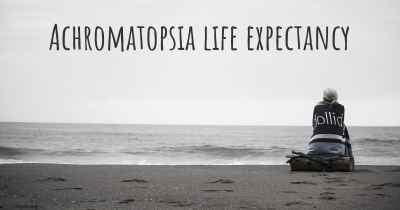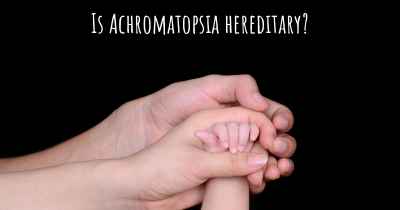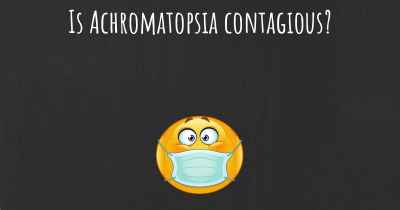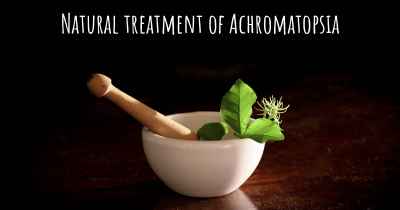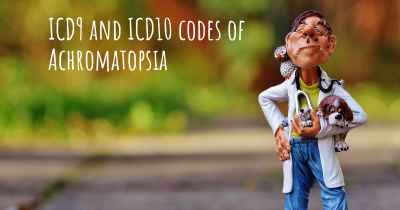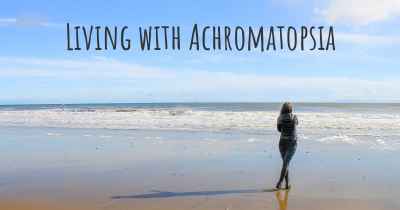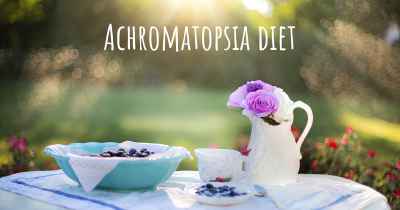What are the best treatments for Achromatopsia?
See the best treatments for Achromatopsia here

Treatments for Achromatopsia
Achromatopsia, also known as total color blindness, is a rare genetic disorder that affects the ability to perceive colors. People with achromatopsia typically have difficulty seeing colors and experience other visual impairments such as extreme sensitivity to light and reduced visual acuity. While there is currently no cure for achromatopsia, there are several treatments available to manage the symptoms and improve the quality of life for individuals with this condition.
1. Corrective Lenses
One of the most common treatments for achromatopsia is the use of corrective lenses, such as tinted glasses or contact lenses. These lenses can help reduce light sensitivity and improve visual acuity. Tinted lenses, specifically designed for achromatopsia, can also enhance color perception to some extent. The specific tint and intensity of the lenses may vary depending on individual preferences and needs.
2. Low Vision Aids
Low vision aids, such as magnifiers and telescopic lenses, can be beneficial for individuals with achromatopsia. These devices can help improve visual acuity and allow individuals to perform daily tasks more easily. Magnifiers can be used for reading, while telescopic lenses can enhance distance vision. Working with a low vision specialist can help determine the most suitable aids for each individual's specific needs.
3. Assistive Technology
Advancements in technology have led to the development of various assistive devices that can aid individuals with achromatopsia. For example, screen readers and screen magnification software can assist with computer and smartphone usage. Additionally, specialized apps and filters can be installed on electronic devices to adjust color contrast and reduce glare, making it easier for individuals with achromatopsia to navigate digital interfaces.
4. Vision Therapy
Vision therapy, also known as visual training or orthoptics, is a non-surgical treatment option that aims to improve visual function and enhance visual skills. It involves a series of exercises and activities designed to strengthen the eye muscles, improve eye coordination, and enhance visual processing. While vision therapy cannot cure achromatopsia, it can help individuals with this condition develop compensatory strategies and improve their overall visual abilities.
5. Genetic Counseling
Since achromatopsia is a genetic disorder, genetic counseling can be beneficial for individuals and families affected by this condition. Genetic counselors can provide information about the inheritance patterns, genetic testing options, and the likelihood of passing the condition to future generations. This can help individuals make informed decisions about family planning and understand the potential risks associated with achromatopsia.
6. Light Filtering
Light filtering techniques can be employed to reduce the impact of bright lights on individuals with achromatopsia. This can include wearing sunglasses or using specialized filters on windows and light sources to reduce the intensity of light entering the eyes. By minimizing the exposure to bright lights, individuals with achromatopsia can alleviate discomfort and improve their visual experience in various environments.
7. Psychological Support
Living with achromatopsia can be challenging, both physically and emotionally. Therefore, psychological support is an essential aspect of treatment. Counseling or therapy sessions can help individuals cope with the emotional impact of the condition, manage any associated anxiety or depression, and develop strategies to adapt to their visual limitations. Support groups and online communities can also provide a valuable platform for individuals to connect with others facing similar challenges.
While there is no cure for achromatopsia, these treatments can significantly improve the quality of life for individuals with this condition. It is important for individuals with achromatopsia to work closely with healthcare professionals, including ophthalmologists, low vision specialists, and genetic counselors, to determine the most suitable treatment options for their specific needs.
Posted Apr 23, 2017 by Firas charfeddine 720
